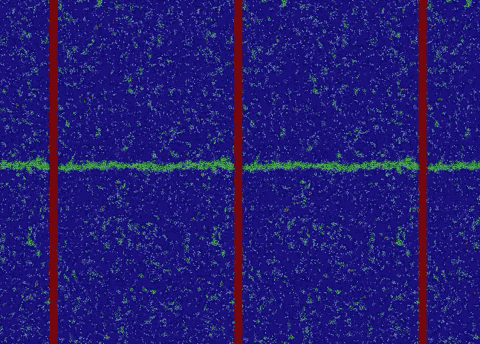Understanding the 'fundamental nature' of atomic-scale defects

Materials scientists study metals, polymers, and other substances at the atomic level in order to find new ways to control a material's physical properties, such as how strong or how malleable it is. One key aspect of this line of study is better understanding how a material's atoms are spatially arranged—most metals, for example, consist of atoms that are arranged in a lattice-like pattern that regularly repeats.
While all of the atoms in a piece of metal might have the same overall pattern, different regions of the material might have the pattern in different orientations. These regions, or "grains," are like squares in a patchwork quilt made entirely out of the same patterned cloth, but where each square is rotated 90 degrees from its neighbors. Understanding where these different grains contact one another, called grain boundaries, are crucial for materials scientists since this is where defects, corrosions, or damage are most likely to occur. In addition, it's also important to know how quickly grains move past one another when, for example, a material is placed under pressure, because grain boundary dynamics dictate how one could potentially imbue a material with a specific property.
A team of engineers at Penn recently published research that provides a deeper mathematical understanding of what factors govern the dynamics of grain boundaries. Using molecular simulations and statistical models, they "demonstrate the fundamental nature" of grain boundary mobility. Being able to relate the behavior of grain boundaries to external forces could help engineers determine which of the two endpoints to target as they seek to imbue materials with unique or desired properties.
Their work was published in the Proceedings of the National Academy of Sciences.
More information: Kongtao Chen et al. The grain boundary mobility tensor, Proceedings of the National Academy of Sciences (2020). DOI: 10.1073/pnas.1920504117
Journal information: Proceedings of the National Academy of Sciences
Provided by University of Pennsylvania





















